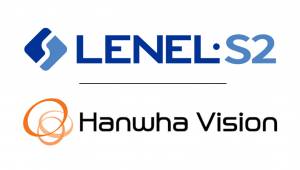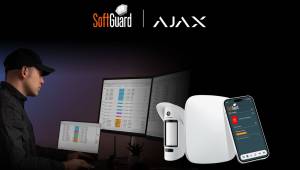 The mercantile store is one of the most common buildings in our society. In the column of this edition we will find information of interest in the field of fires in this type of buildings.
The mercantile store is one of the most common buildings in our society. In the column of this edition we will find information of interest in the field of fires in this type of buildings.
by Jaime A. Moncada*
The mercantile store is one of the most common buildings in our society. We visit them to buy clothes, to make market, to acquire furniture, as well as all the things we need to carry out our daily lives. There are small and very large, such as the wholesale super-stores, called in English as "big-box stores", a warehouse-type building where the public accesses the goods from the same shelves that store them. Since the fifties, department stores have become common in our Latin American cities.
But perhaps the most emblematic building of its kind in our daily lives is the mall of covered galleries (popularly called in English as mall). This building is classified by the NFPA as a mercantile occupation that has a covered common pedestrian area used as a pedestrian thoroughfare, which interconnects a building that houses small specialty stores and anchor-type department stores, and sometimes cinemas, food courts, bowling alleys and administration offices. NFPA does not allow, without additional protections, a mall to exceed three levels that are open to each other. Let's analyze then the fire safety of a shopping center:
Fire Suppression Systems: Automatic sprinkler systems are required both in department stores and through shopping malls, including covered pedestrian galleries (NFPA 1, 2015: 13.3.2.23.4). The sprinkler system must be designed so that each area that has a different user can be sectored by a valve, so that a renovation in that space does not leave the rest of the tenants without fire protection.
The cabinet with equipped hose is no longer required in almost any use by the NFPA. A mall is no exception. NFPA requires that 2 1/2-inch hose connections be installed at every exit access that is on the covered gallery pedestrian pathway, on each landing within an enclosed staircase, and at public entrances to the mall (NFPA 1, 2015: 13.3.2.23.4.2.2). Each of these connections must have a minimum flow rate of 250 gpm (946 bpm).
Smoke Control: Although over time there have been several approaches to smoke management in a shopping mall, today the removal or active release of smoke is only required in shopping centers that have an internal gallery that communicates more than two levels (NFPA 101, 2015: 36.4.4.12)). Fire experiences in covered malls indicate that the most likely source of a fire is in the store space, where the fuel load of the fire is much higher than that of the pedestrian gallery. Fires in the pedestrian gallery cause less smoke development compared to fires in adjacent spaces such as stores.
The smoke control system must achieve the following: (1) Ensure the integrity of the covered pedestrian gallery so that it has a degree of safety similar to a pedestrian pathway, keeping it reasonably free of combustion products that have a duration not less than that required to evacuate the mall; (2) Confine combustion products to the area of origin; (3) Eliminate combustion products with minimal movement of such products from a confined space, such as the store, to the top of the pedestrian gallery. The most common method today is through a mechanical smoke extraction system, which is independent of the heating, ventilation and air conditioning system of the shopping center. Another option is to use roof ventilation devices such as skylights or smoke exutoria, which using the buoyancy and thrust of smoke, and operated by manual or automatic release, extract the smoke. These systems are not as efficient as mechanical extraction systems and are becoming less common.
Detection and Alarm Systems: Shopping centers must be protected with an alarm system. Visible signals are not required as it is assumed that people with hearing impairments would be informed by other occupants (NFPA 101, 2015: 36.4.4.7). Alarm buttons are also not required, as it is assumed that the activation of the automatic sprinkler system is the method of initiating the alarm. Smoke detection systems are also not required, except if the covered pedestrian gallery is protected with a smoke control system. In this case, the pedestrian gallery should be protected with smoke detectors. The most typical and cost-efficient detection method is light beam detectors.
Sectorization and Evacuation: The covered pedestrian gallery is considered as an area that has a level of security equivalent to the outside. In addition to the smoke control requirements mentioned above, the covered gallery must meet compartmentalization, separation and evacuation criteria. NFPA regulations do not require a fire separation between the stores and the paetonal gallery. However, the walls separating the different tents must have a fire resistance of one hour and must extend from floor to ceiling (NFPA 101, 2015: 36.4.4.4.2(5)).
Shops can evacuate through the pedestrian pathway, as long as there are evacuation routes every 61 m of distance to travel, with exits with a width of at least 1.68 m (NFPA 101: 36.4.4.4.2). To prevent a fire from jumping from one store to another, on the other side of the pedestrian path, the distance between the facades of these stores must be at least 6.1 m.
Kiosks on the paetonal road are allowed as long as they are at least 6.1 m horizontally from other kiosks or any other structure in the mall (NFPA 101, 2015: 36.4.4.11).
As I mentioned in previous columns, in the analysis of the fire safety of an installation, regulatory rigor must be taken, above all. An acceptable level of fire safety is obtained by analyzing each building as a whole, and following the aforementioned parameters, including the evaluation of human safety (means of egress, signage, lighting); the definition, design and installation of suppression and alarm, detection and notification systems; the specification and limitation of the interior contents; access to the fire department and exposure to adjacent hazards; and the definition, design and construction of the elements that confine a fire and control smoke. In the construction process, the earlier all the elements that lead a building or structure to achieve acceptable fire safety are evaluated, the solutions found will be more effective and, generally, more economical.
*Jaime A. Moncada, PE is a director of International Fire Safety Consulting (IFSC), a fire protection engineering consulting firm based in Washington, DC. and with offices in Latin America. He is a fire protection engineer graduated from the University of Maryland, co-editor of the NFPA Fire Protection Handbook, Vice President of the Society of Fire Protection Engineers (SFPE) and directs NFPA professional development programs in Latin America. Moncada's email address is [email protected].

























Leave your comment